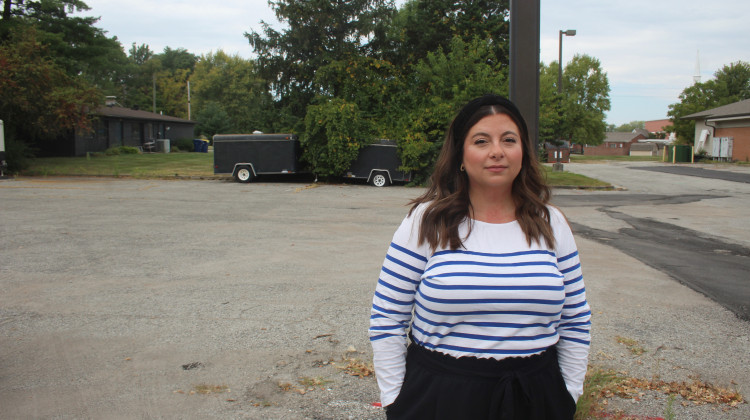In case you haven't heard, it's (really, really) cold outside for most of us living in the lower 48.
Chicago, which is already known for its biting cold, hit 16 below zero this morning, setting a new record low for a Jan. 6. (The coldest day in recorded history for the city is 27 below zero set on Jan. 20, 1985.)
Now, you could just sit inside and drink some hot chocolate. Or you could bundle up and venture outside in the name of science and fun. (You should read these frost bite tips, first.) With that in mind, we scoured the Internet for three cool experiments that take advantage of the historic cold weather.
1. What Happens To Boiling Water In Minus-21 Fahrenheit Cold?
Meteorologist Eric Holthaus lit up the Internet today with this experiment. He walked out of his Viroqua, Wis., home and threw a cup of boiling water into -21°F air. Here's what happened:
Yep. It turned into ice crystals before it hit the ground. What's counterintuitive is if you threw a cup of ice-cold water, it would fall to the ground still a liquid. Why?
Live Science asked Mark Seeley, a climatologist at the University of Minnesota, to explain the phenomenon. He said:
"When it's cold outside, there's hardly any water vapor present in the air, whereas boiling water emits vapor very readily that's why it's steaming. When you throw the water up in the air, it breaks into much smaller droplets, so there's even more surface for water vapor to come off of.
"Now, cold air is very dense, and this makes its capacity to hold water vapor molecules very low. There's just fundamentally less space for the vapor molecules. So when you throw the boiling water up, suddenly the minus 22 air has more water vapor than it has room for. So the vapor precipitates out by clinging to microscopic particles in the air, such as sodium or calcium, and forming crystals. This is just what goes into the formation of snowflakes."
Now, it has to be very cold for this work, so only some of you may be able to perform this trick.
2. Blow Bubbles And Watch Them Freeze:
This one is just visually cool and you can probably get away with doing it in the kind of cold most of the country will get today. Here's a YouTube video posted last March of a number of freezing bubbles:
Weather.com, by the way, recommends heating up the bubble solution for the same reason we touched upon above.
3. Make Some Slurpee By Super Cooling Some Soda:
Nziegler, from Minnesota, uploaded this experiment to YouTube:
He said that he left that soda — or "pop" as he says — out in 7 degree weather for about four hours. What's happening here? The soda has been cooled below its freezing temperature and there are no "imperfections" to kick off the formation of ice crystals. Opening the bottle unleashes a chain reaction, which leads to an "instant slurpee."
The Physics Department of the University of Illinois at Urbana-Champaign explains how super-cooled water works:
"Water normally freezes when it is cooled below 0 degrees Celsius, forming ice crystals. Ice crystals form more easily when they grow on existing ice crystals — the water molecules like to pack themselves in place on a crystal that's already gotten started. It doesn't take much to start the crystallization process going — a little piece of dust or other impurity in the water, or even a scratch on the bottle are sometimes all it takes to get ice crystals growing. The process of starting off a crystal is called 'nucleation.'
"In the absence of impurities in the water and imperfections in the bottle, the water can get 'stuck' in its liquid state as it cools off, even below its freezing point. We say this supercooled state is 'metastable.' The water will stay liquid until something comes along to nucleate crystal growth. A speck of dust, or a flake of frost from the screw-cap falling into the bottle are enough to get the freezing going, and the crystals will build on each other and spread through the water in the bottle."
And here's another video that provides a few more techniques:
9(MDEwMDc1MzM3MDEzNDczOTA0MDc1MzViMQ001))
 DONATE
DONATE








 Support WFYI. We can't do it without you.
Support WFYI. We can't do it without you.